 Barton Wells, a former swimmer at Stanford University, finished seventh in the 2009 FINA 10KM Marathon Swimming World Cup, an amazing accomplishment for the masters swimmer from San Franciso.
Barton Wells, a former swimmer at Stanford University, finished seventh in the 2009 FINA 10KM Marathon Swimming World Cup, an amazing accomplishment for the masters swimmer from San Franciso. While running a start-up business in San Francisco, Barton was somehow able to travel around the world to compete on the FINA World Cup professional circuit.
We caught up with him after the long season.
 10KSwimmer: What prompted you to participate on the pro circuit?
10KSwimmer: What prompted you to participate on the pro circuit?Bart: It was basically the advice of Lisa Hazen, a former pro circuit swimmer [who competed in FINA Grand Prix races from 1994 - 1997], now a masters swimmer, who suggested that Heidi should check out the [professional] open water circuit.
Heidi was winning masters open water races by huge amounts (she won the 1-mile national championships [in central California], without tapering or shaving, and in a workout suit, by almost 1-1/2 minutes), she was not restricted by school, had a flexible job, and it seemed like it could be a fit. I was also winning masters races and also appreciated a greater challenge, also did not have school or an inflexible job to restrict myself.
10KSwimmer: Why did you pick the races that you entered?
Bart: We just picked what races were left on the FINA World Cup professional circuit.
 10KSwimmer: What did you learn about swimming against the world’s fastest marathon swimmers? [Photo by David Nager of NYC Swim on left shows the field during the NYC Pro Swim in New York Harbor]
10KSwimmer: What did you learn about swimming against the world’s fastest marathon swimmers? [Photo by David Nager of NYC Swim on left shows the field during the NYC Pro Swim in New York Harbor]Bart: We learned how much less we train than all of the other swimmers. We train about half as much.
We also leaned how rough international open water swimming is, where getting elbowed in the nose, kicked in the face, hit in the head, feet pulled on, and goggles ripped of are all common. Obviously we saw firsthand how fast they are.
10KSwimmer: Did anything funny happen to you on the circuit?
Bart: Swimming in brown water in Shantou [China], then swimming in a blue pool in Shantou that we found out was blue only because they put blue dye in the water. I went off course a few times - funny for Heidi and the coaches in the feeding boat, not so funny for me. Heidi got stage 2 hypothermia in the Copenhagen race.
10KSwimmer: Did you have any problems with your travel to all these countries?
Bart: Well, visas cost more money than we expected. We also got sick a lot - sometimes from the food, sometimes from the water, and sometimes we don't know. A lot of the swimmers, maybe most, got sick at some point, and we know one of the Brazilians got seriously ill. That is a risk of travel and a risk of open water swimming in some of the world's waterways. We also had trouble finding bottled water a lot of the time - that is a constant battle.
10KSwimmer: Was anyone on the circuit particularly helpful to you during the competitions or travels?
Bart: Petar Stoychev from Bulgaria was probably the most helpful person of all. He really helped us out in a lot of areas. Brian Ryckeman from Belgium and Thomas Lurz from Germany also helped us out at times. Also, the coach from Croatia, Slaven Sitic, was very helpful to us giving us advice, and a lot of coaches helped us out with feeding since we didn't have a coach with us. And, of course, Lindsay Mintenko with USA Swimming was helpful with all of our travels.
10KSwimmer: How does the pro circuit differ from open water swims in the US?
Bart: Most of our experience is with masters open water swimming in the U.S, so obviously it was much faster than that, much more competitive, much rougher, and much longer. It was pretty similar to U.S. World Championships Open Water Swimming Trials, but a lot rougher. You tend to get a lot more scratches and bruises on the World Cup circuitr. They also tend to put you in water that isn't always clean or isn't always so safe (read: sharks and/or jellyfish).
10KSwimmer: If you were ten years younger, how would you approach the pro circuit?
Bart: If we were ten years younger we probably would not have swum as many races, if any. I think a large part of doing the circuit was really that it was a good time in our lives to see the world. Also, we are a couple now, but ten years ago we would have been doing it on our own, which would have been quite lonely. Also, neither of us had the coaching or the training opportunities ten years ago to put us in a position to do these events. Our current coach, Jose Bonpua at Los Altos Mountain View Aquatics, caters our workouts to help us with our specific goals. Also, neither of us had a career that would have afforded us the opportunity to go to these races a decade ago.
10KSwimmer: Are you and Heidi going to continue competing on the pro circuit next year?
Bart: We have made no decisions about next year yet. We only have a few months of 10K swimming under our belts and are now taking a break and are trying to figure out where to go from here. Obviously going to these races is a huge expense, and we have to figure out what makes sense.
10KSwimmer: Will you or Heidi step up to the longer FINA Open Water Swimming Grand Prix races next year – or is 10K a good distance for you both?
Bart: Heidi did the last longer FINA Grand Prix race, a 15K race in Abu Dhabi, four days after the last World Cup race, and did extremely well (7th). It might be fun to do some of the longer races.
In an adventure of a lifetime, we sincerely wish Bart and Heidi well. Their passion for the sport, their successful lifestyle balance between work and professional swimming and the sacrifices they make to travel the world are something to behold.
Copyright © 2009 by World Open Water Swimming Association



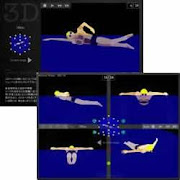




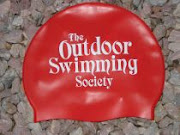

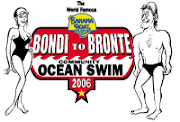


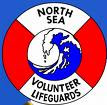
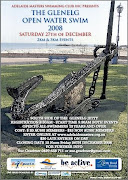





No comments:
Post a Comment